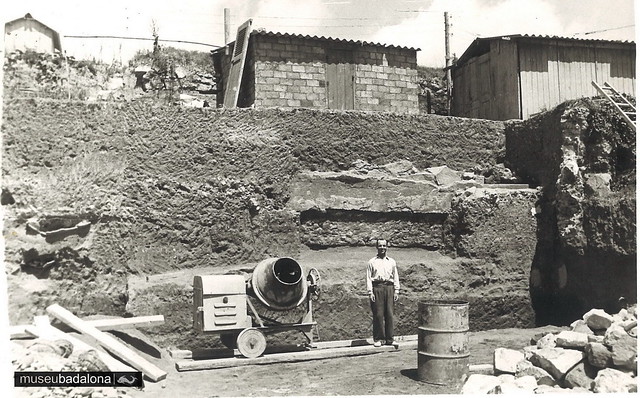In the mid-1940s, the owners of the Torre Vella de Badalona presented a development project for the land popularly known as the Clos de la Torre.
This urbanization – called the Pinós urbanization – had already been attempted in the 1930s, but was stopped by the Civil War. Once the project was approved, the blocks were divided into lots that were gradually sold. This is how the current square of the Assembly of Catalonia and the streets of Termes Romanes and Laietània were formed.
In 1957, before it was built, the area of the square of Assembla de Catalunya was excavated and found, among others, the pool or pond that is currently preserved in the Quintus Licinius Garden, an element that, almost entirely, will reach our days. Years later, the urbanization and construction of the upper area (the current area of Carrer de Laietània) begins where the remains of a large house from the Roman period are found, remains that, at that time, were not kept
A set of photographs from the Josep M. Cuyàs Archive document these excavations and the structures that were found there.





